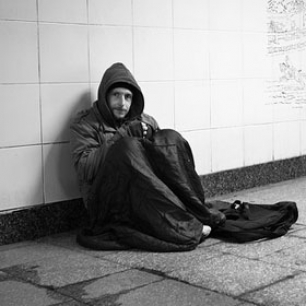NDARC is a collaborator on the MISHA project, an integrated program led by Mission Australia that provides long term stable accommodation and a holistic service delivery approach to homeless men.
Below is a media release, first published by Mission Australia, on the baseline findings of the project.
A Mission Australia study has found that homeless men experience Post-Traumatic Stress Disorder (PTSD) at levels more than four times the Australian mainstream male population and even higher than returned servicemen.
The How Homeless Men Are Faring: Baseline Report from Michael’s Intensive Supported Housing (MISHA) surveyed 75 men at their entry point to the Sydney-based MISHA homeless program, which links them with housing and support services.
The report found that 20 per cent of the men screened positive for PTSD. This is more than four times higher than Australia’s mainstream male population, where the rate is 4.6 per cent.
It’s also higher than that of returned troops in the US, where the upper estimate for PTSD incidence is 17.1 per cent. Martin Thomas, Mission Australia’s General Manager of Advocacy and Social Policy, said the data was an important piece in the puzzle in understanding the causes of homelessness and how to address it.
“For men living in Sydney without secure accommodation to have a higher level of PTSD than returned servicemen who have witnessed killings and other war-related violence is shocking,” said Mr Thomas.
“We’ve known anecdotally for a long time that homeless people experience higher levels of violent victimisation, such as physical and sexual assault. That’s because, by the nature of not having a safe and secure home to go to, they are more visible and exposed.
“We’ve also known for a while that struggling with mental health is a contributing factor to people becoming homeless in the first place, and which also prevents them from being able to maintain independent accommodation,” Mr Thomas said.
“So we are not surprised that there is a relatively high level of distress among this group. But what is so surprising is that the rate of Post-Traumatic Stress Disorder for these men is so high – even higher than that of returned servicemen who have been to warzones and experienced combat, the death or significant injury of a comrade or injury to themselves.”
Of the men surveyed, 89 per cent had experienced at least one traumatic event in their life. The most commonly experienced trauma was being threatened with a weapon or being held captive, witnessing another person being seriously injured or killed, and being physically abused. Half the respondents had been involved in a life-threatening accident and almost one quarter had been sexually molested.
Mr Thomas said that while the results were worrying, it did confirm what services have been reporting. Mission Australia’s internal data confirms that frontline service staff in homelessness services often spend more time helping people with mental health needs than they do dealing with homelessness.
The Australian Bureau of Statistics recently reported an eight per cent increase in homelessness in Australia between 2006 and 2011. The deteriorating homelessness situation will make reaching the nation’s goal of halving homeless numbers and offering all rough sleepers access to accommodation by 2020 very difficult.
Federal and state governments have agreed to a one-year extension of funding for the National Partnership Agreement on Homelessness – a crucial initiative in tackling the problem – while a new deal is negotiated to begin in July 2014.
Mr Thomas said the MISHA’s PTSD results confirmed the need for psychological services to be embedded as an essential component in any service delivery model when helping people out of homelessness.
“The MISHA program, which is funded by a private donor, links chronically homeless men in the Parramatta area to social housing, and then builds a range of services around individuals to help them keep their tenancy and stay off the streets.
“Critically, it employs a dedicated psychiatrist for the men it helps, due to their tendency to experience a high rate of trauma, mental distress and difficulty accessing mainstream health services. Given the level of trauma experienced by homeless people, it’s a model that should inform future homeless service delivery across the country,” said Mr Thomas.
The report is available for download below.



